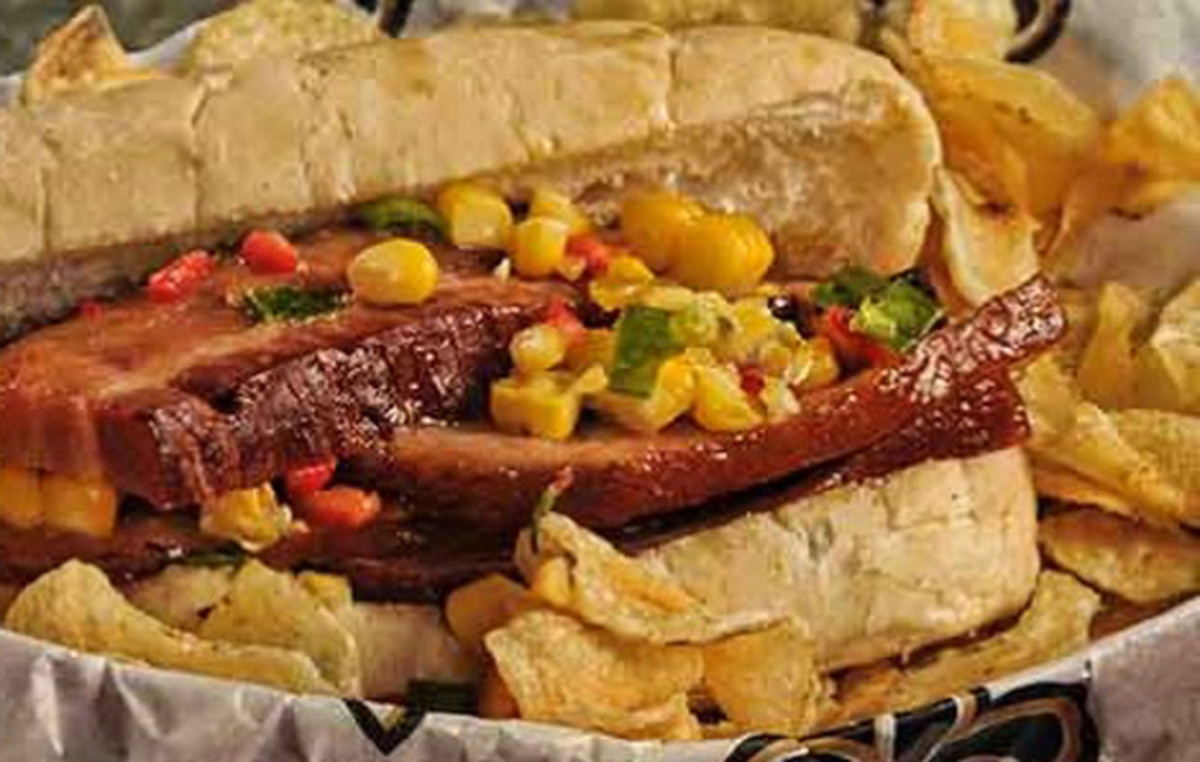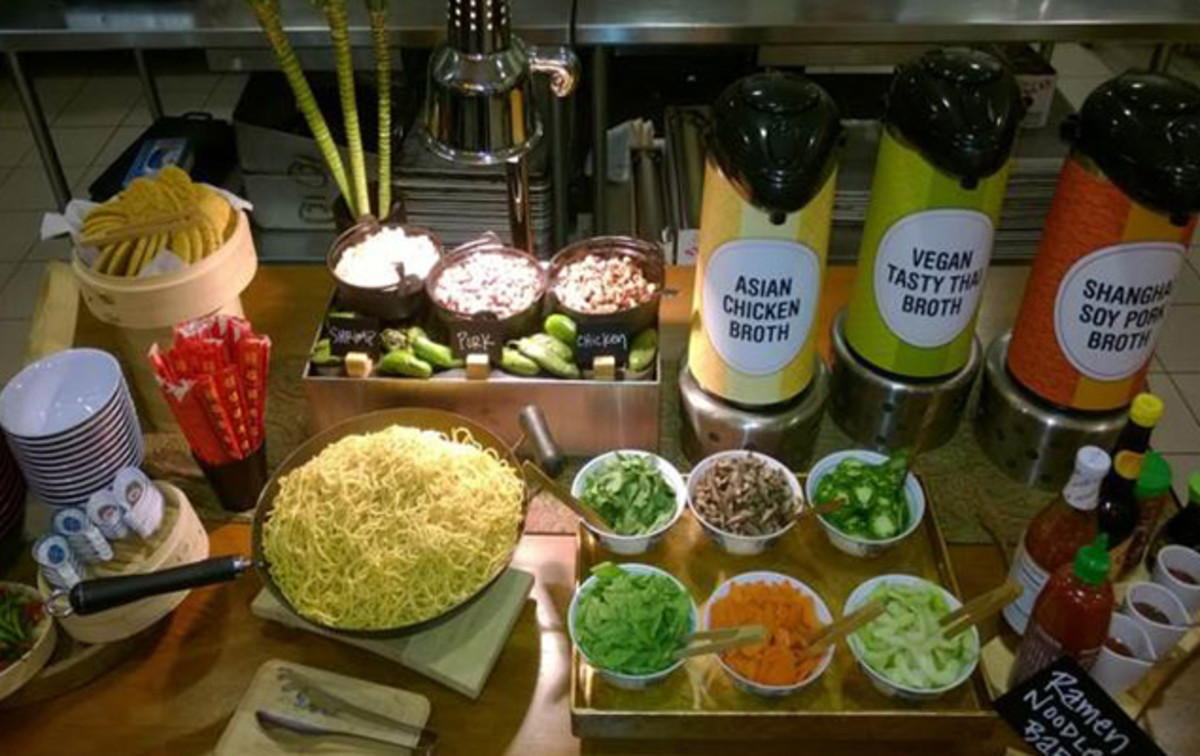From steamed hot dogs to fancy flavors: NFL’s stadium food revolution

Think of the NFL stadium hamburger of yesteryear. Whether five, 10 or even 20 years ago, it was a nondescript strip of meat slapped between a typical church potluck-type bun, offered up with your squeeze-containers of ketchup, mustard, relish and—maybe—chopped onions a few yards away on a concourse counter tucked between the restrooms and your stairwell.
Across much of the league, that hamburger still exists, but not in the same form: Now it’s a grass-fed beef burger on a sourdough bun served with lettuce, onions, tomatoes and pickles and adorned with condiments in front of you.
“People are much more food focused,” says Sal Ferrulo, executive vice president for Centerplate, a company that tackles food service in five NFL stadiums, including the newest, Levi’s Stadium in Santa Clara. “We’ve had to make the event a better experience for the fan. It is about the game, the food, being comfortable. It is the era of the open kitchen. People buy with their eyes, they want to see the food and smell it.”
NFL Power Rankings Week 17: Cards fly to top for final week of season
As a consequence, NFL stadium food has evolved significantly in the last five years. As the larger American food culture began to welcome in a wider range of ingredients, whether ushered in by their Food Network favorites, specialty markets or health-savvy advisors, stadiums have been compelled to keep pace in order to lure fans to eat at their venues.
And as new stadiums open, they’re even constructed in a different way, accommodating for the rush of new eatery styles with expanded concourse spaces, better selections of craft beer—not exactly a consideration in decades past—and a fresh way to experience food. Even old stadiums started to change the way they approached food during remodels. Restaurant space had to mimic that of modern food culture, with a shift toward open kitchens, new ingredients and diversity of flavors.
“People are going to venues prior [to a game] and after to capture in the stadium the local flavors they expect to find around [the city],” says Joe Nader, executive chef at Detroit’s Ford Field, a Levy Restaurants venue. “Now they can enjoy the local flavors and things they would expect to find around Detroit inside the stadium.”
Stadium food is trending local, flavor-focused and beyond the basics. Sure, the core items of hot dogs, popcorn, nachos, soda and draft beer will always remain. But now they are joined by regional specialties.
In Santa Clara, the steamed bao sampler highlights the fusion of Bay Area food on a menu with 180 different regionally inspired choices. Indianapolis features a slow-roasted homestyle pot roast sandwich and New Orleans a Steen’s cane syrup-braised pork belly Poydras Street Po-Boy, just to name a few.

Sometimes even typical stadium fare takes a regional twist. Take Nader’s hot dog, for example. “We’ve done a million things with hot dogs,” he says. “You can always get your great grilled stadium dog and there is nothing wrong with those, but then you have Chicago dogs and all these different toppings and the evolution with the hot dog itself has been pretty amazing.” Ford Field offers a Coney dog, known throughout town as a signature dog for Detroit.
“It is the ingredients and topping you put on it,” Ferrulo says. “Maybe you are making your chili from local sources. Some areas are famous for chili and cheese and others for sauerkraut. The offering of the toppings is how you can personalize it to a region.”
Examining the future of virtual reality and the impact it will have on football
Local is powerful. Ford Field features a variety of popular city establishments within the suite and club spaces, even around the concourses. Expect to see pho noodles or gyros from the city’s Greektown. “It is not just stadium food, but bringing those local flavors, the whole fabric of the culinary scene, here into the stadium for the guests,” Nader says.
Nader spends time daily at Detroit’s popular Eastern Market hub, following the local culinary trends. That’s why the Lions’ home stadium features local barbecue, Asian cuisine, meats and cheeses and craft beers.
“People want to know what items are popular regionally and they like to try to experience them,” Ferrulo says. “I really think the age of the cookie cutter is dead. People want to experience customization.”
While stadium food purveyors agree that the food scene was the first to trend experiential, the beverage selections weren’t far behind. Even with draft beer a well-known NFL fan staple, everything from mixed drinks to craft beers have started flowing in NFL stadiums.

Take the 49ers’ Levi’s Stadium, host of this year’s Super Bowl, as an example, with over three dozen craft beers available.
As stadiums evolve, they shape their design for open-kitchen concepts and more on-site cooking and prep. “They want to understand what they are purchasing,” Ferrulo says. “It is a great story to use local products. It makes it special.”
And this isn’t just for the folks in the expensive seats. General concession areas and premium spaces have begun to merge together, with similar menus often available in all portions of the stadium and changing from game to game.
How I feel as a player after seeing Concussion, learning more about CTE
Chris DeVolder, sustainable design leader for the sports group at HOK, the firm behind the design of Atlanta’s new NFL venue, says the hottest thing right now in stadiums centers around gameday food—everything from sustainably caught seafood and grass-fed, locally grown beef to ways to grow more produce onsite.
It all caters to drawing crowds to the event and making that experience memorable. “A lot of people do have favorite places to meet and that puts more pressure on the food and beverage provider to offer top-notch quality and fresh, it is another reason to be local,” Ferrulo says. “If you have local ingredients and items, that is what the people locally enjoy.” Take Seattle as an example, where a high-quality crab sandwich in the stadium may entice a visitor to skip the pregame crab at Pike Place Market.

From food and beverage providers to architects, stadiums work to create destinations for people to meet, hang out and take part in an interactive event. Take Miami as an example. Miami’s Joe Robbie Stadium—now Sun Life Stadium—opened in 1986 as the first stadium to offer in-seat food service to all 10,000 patrons in the club level, and that standard has evolved to the present day, as Levi's Stadium now has an in-stadium app allowing in-seat ordering from anywhere in the venue. But larger than the convenience has been the experience.
Seven options for where Chip Kelly may coach next year if he stays in NFL
Five years ago, Sun Life Stadium partnered with Miami’s famous LIV nightclub to create club-level cabanas with DJs and performers, opening an entertainment destination inside the stadium. The entertainment focus required improved food too, adding in Cuban-inspired dishes such as fried plantains, Cuban sandwiches and empanadas.
Such diversity of space means that venues no longer have just one signature dish. Venues are too large and diverse for that. “I want to have signature flavors more than signature items,” Nader says. “I want to honor the cultural tradition we have here in Detroit. We are rich in that regard and I want to integrate that.”
From creating desirable destinations to fostering diversity or establishing signature flavors, the stadium food experience has evolved as it focuses on drawing people to the stadium. The key factor across the board falls on high-quality local flavors.
“I think peoples’ palettes in the United States in general have progressed greatly across the country,” Nader says. “The stadium experience has come along with it. Version 2.0 is bringing restaurant-quality food to unexpected places like stadiums. The expectation now for a stadium experience is much greater.”
Tim Newcomb covers stadiums, sneakers and technology for Sports Illustrated. Follow him on Twitter at @tdnewcomb.
